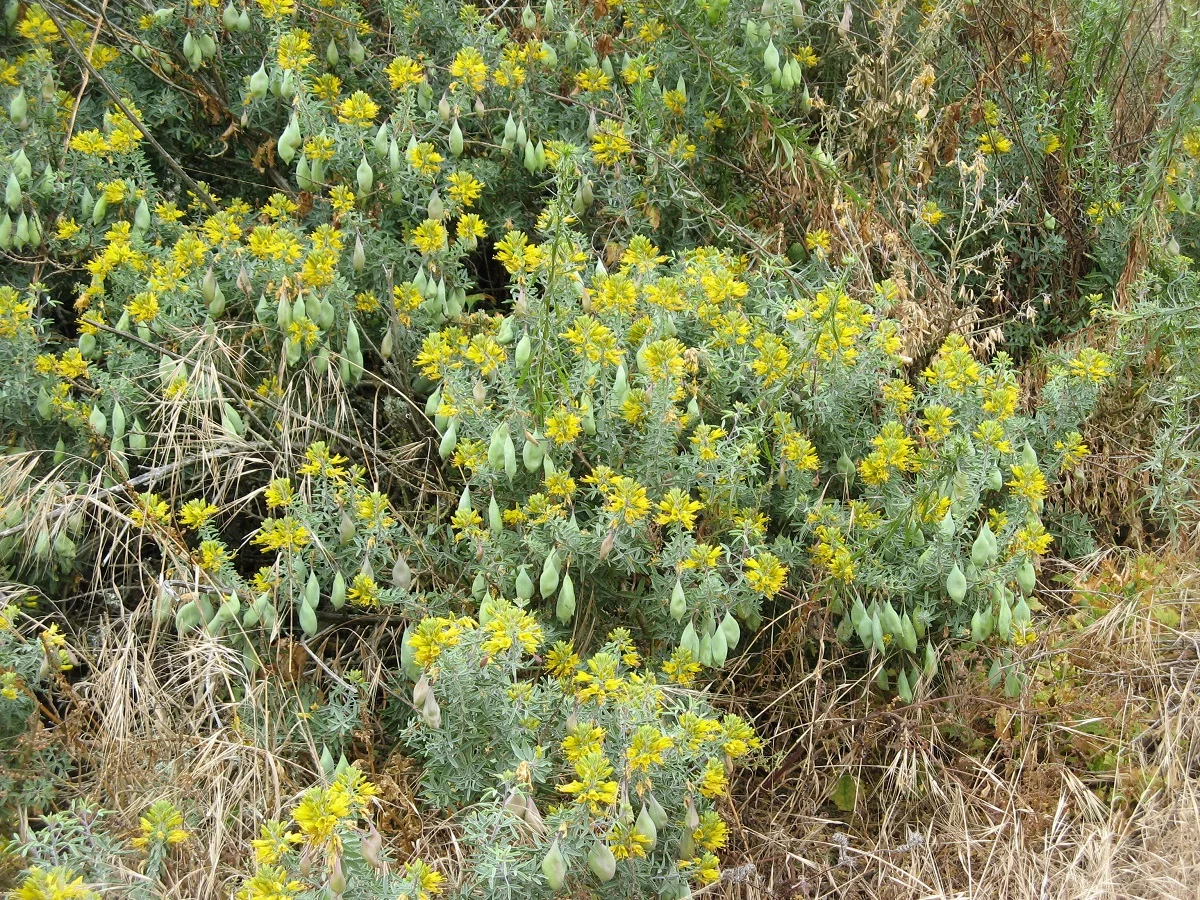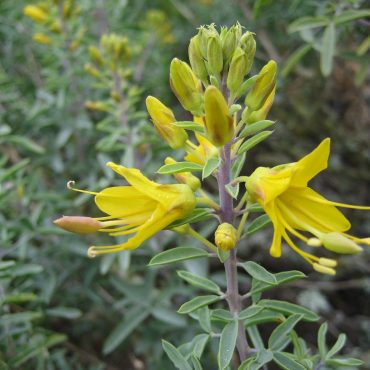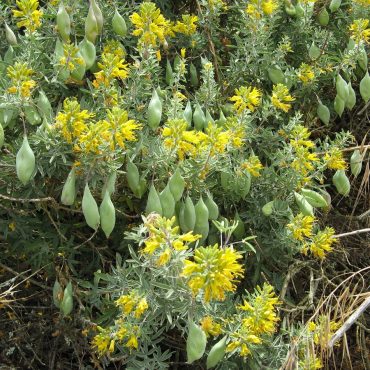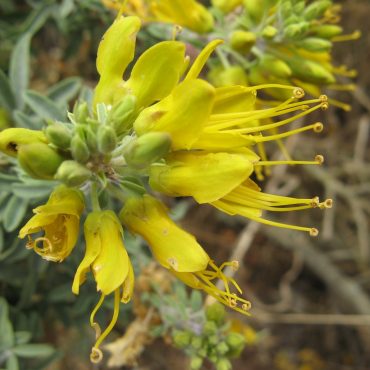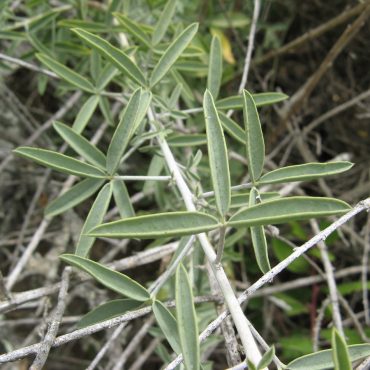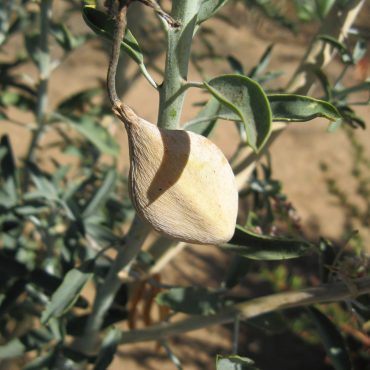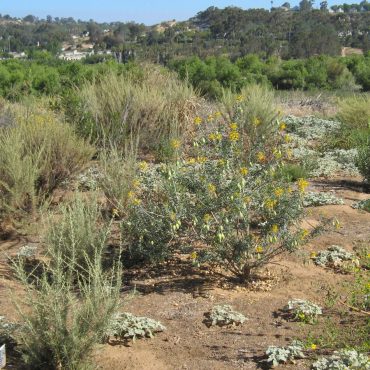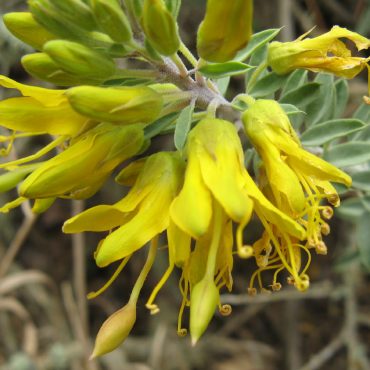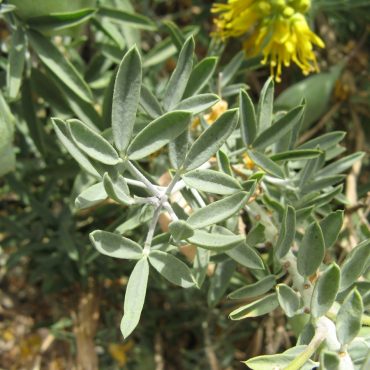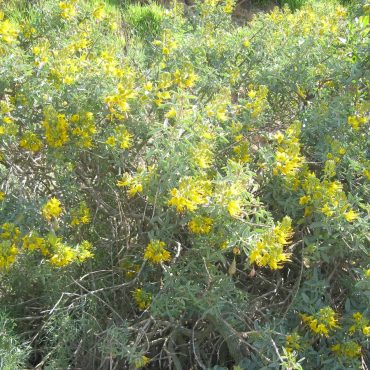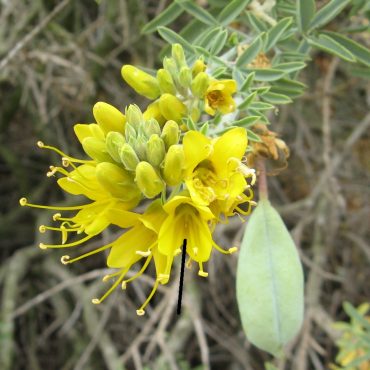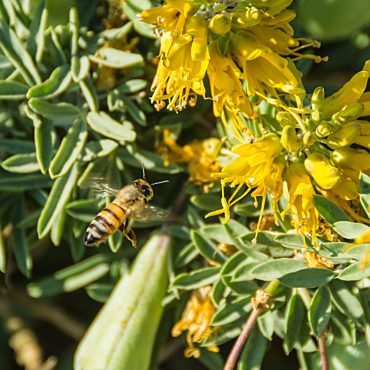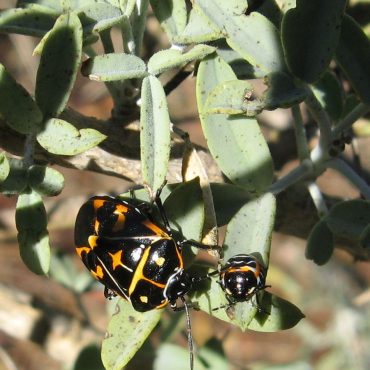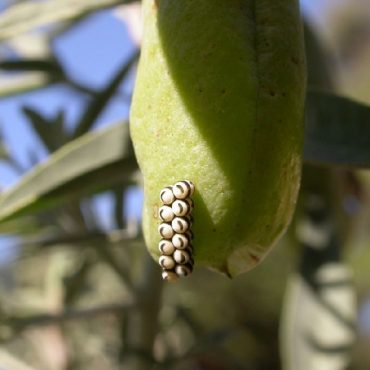Bladderpod is a small, rounded evergreen shrub that grows to 10 feet (3 meters) high, but is usually much smaller. It is dense with pale, interwoven branches. Stems, leaves and fruit are covered with a waxy coating and contain strong smelling compounds, mustard oils, produced from glucosinolates in the plant tissues when the tissues are damaged. These compounds, which give cabbage and broccoli their piquant flavor, give the bladderpod a disagreeable odor. The odor has been called sulfurous4 and compared to burned popcorn;169 some detect a strong green pepper component.271
The gray-green leaves are palmately divided into three leaflets less than 1 3/4 inches (4.5 cm) long. Leaves decrease in size toward the flowering end of the branches; those nearest the flowers are often undivided.
The showy flowers are bright yellow, up to 5/8 inch (1.6 cm) long and clustered at the branch ends. There are four green sepals, less than half the length of the flower; these are fused at their bases, and four lobed above. The four petals are unfused, flaring outward beyond the sepals. There are six stamens of equal length, projecting beyond the petals. A well-developed pale green nectary disk in the base of the flower produces abundant nectar. The elongate anthers are attached to the filaments at one end and project beyond the petals; anthers are straight when young, coiling tightly after the pollen is released. The pistil has a large, superior ovary on a long stalk that projects beyond the petals when young and further elongates as the fruit matures. The style is short and the stigma is minute. In some flowers, the pistil fails to develop, creating male flowers in the same clusters as bisexual flowers. The main bloom period is April and May,1 but flowers may be found in all months.
The fruit is a conspicuous, leathery, inflated, egg-shaped bladder that hangs from the branch ends. Fruits have been likened to fat pea pods,4,23 and lanterns;24 boxing bags (“speed bags”) also come to mind.271 The bladder is green, sometimes purplish when young, aging to paper-bag brown and usually contains up to 12 spherical brown seeds. The fruit may persist on the plant unopened for some time.

